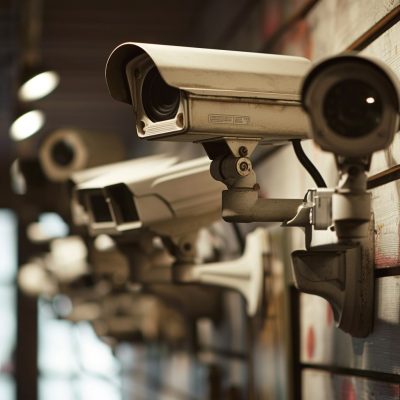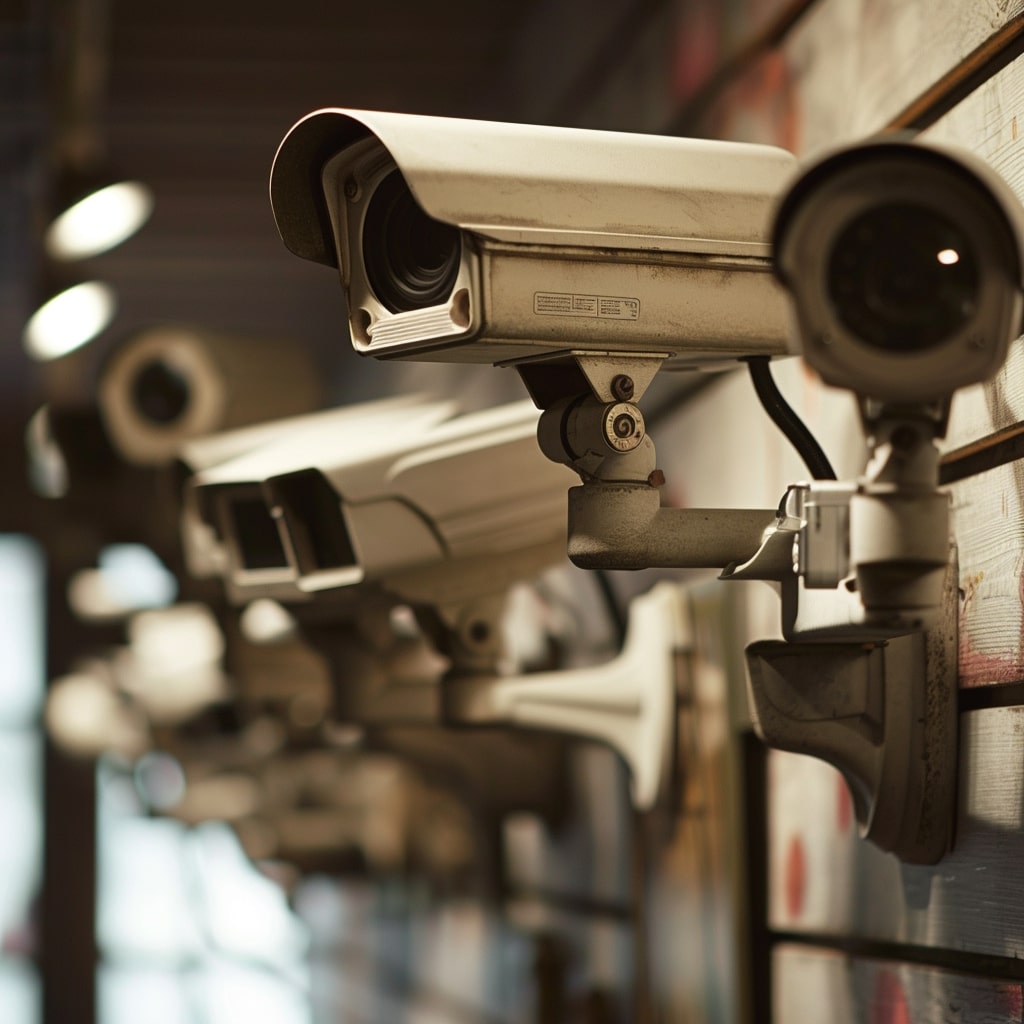Table of Contents
Table of Contents
When did CCTV become common? The journey of closed-circuit television (CCTV), from a specialized military tool in the 1940s to a staple in security systems worldwide in the 1980s, is a fascinating story of technological evolution and societal adaptation. This article traces the history of CCTV, highlighting the key developments that transformed it into an essential feature of modern security and video monitoring

What is CCTV?
Closed-circuit television (CCTV) is a system of video cameras used to transmit a signal to a specific place, on a limited set of monitors. It differs from broadcast television in that the signal is not openly transmitted, but is typically employed for video monitoring and security purposes. Traditionally, CCTV referred to analog systems where video was recorded on tape, but as technology evolved, this term has broadened to encompass digital systems as well.
Despite the advancements in technology leading to the emergence of IP (Internet Protocol) and cloud-based security camera systems, many still use the term “CCTV” to describe these modern systems.
IP cameras, for instance, transmit footage over a network, allowing for remote viewing and storage of data. Solink’s cloud-based system further expands these capabilities by providing cloud storage, advanced analytics, and easy accessibility of video monitoring data from anywhere. This blend of old and new technology under the umbrella term of CCTV reflects its ongoing importance in the realm of security and video monitoring.
When did CCTV become common?
The common usage of CCTV significantly escalated in the 1980s. This period marked a shift from the technology being a luxury for high-security areas to becoming more accessible and affordable for a broader range of applications. The 1980s witnessed the widespread installation of CCTV systems in public spaces like shopping malls, parking lots, and city centers, propelled by the growing need for public safety and crime prevention.
By the 1990s, the presence of CCTV security systems had become ubiquitous. The adoption of VHS technology during the 1980s played a crucial role in this expansion, as it made the recording and storing of security footage more feasible for smaller businesses and public institutions. This decade also saw significant technological advancements, such as the transition from analog to digital systems, which further enhanced the efficiency and quality of video monitoring.
The increased use of CCTV during this period reflects its evolving role from a specialized security tool to a ubiquitous component of urban and business environments, providing a critical layer of security and monitoring.
The history of CCTV security systems
CCTV security systems, originating in the 1940s for military use, have evolved significantly over the decades. Initially used for monitoring operations during World War II, they transitioned to civilian use in the 1950s and 1960s. The 1970s and 1980s marked a significant shift, making CCTV more accessible and widespread, laying the foundation for the advanced digital and cloud-based systems we see today.
Since CCTV became commonplace in the 1970s, it has continued to evolve.
CCTV in the 1940s
The 1940s marked the inception of CCTV technology. Initially developed for military and strategic purposes during World War II, it served as a tool for monitoring rocket launches. This era laid the foundation for future developments in video monitoring.
- 1942: The first documented use of CCTV technology was by the German military for observing V-2 rocket launches.
- Late 1940s: Post World War II, CCTV technology began to find applications in more peaceful contexts, though still limited due to the technological constraints of the time.
CCTV in the 1950s
The 1950s witnessed the transition of CCTV from military to civilian use. This period saw the technology becoming more accessible, although it was still primarily used in high-security areas.
- 1951: The first commercial CCTV system was installed by Vericon in the United States, marking the beginning of its commercial availability.
- 1956: CCTV systems were introduced for traffic monitoring in London, representing one of the earliest public uses of this technology for civil purposes.
CCTV in the 1960s
The 1960s saw significant advancements in CCTV technology. It began to be used more widely for public video monitoring, especially in the United Kingdom.
- 1964: New York City’s police department used CCTV to monitor public spaces during a large event, showcasing its potential for urban video monitoring.
- 1969: The introduction of the silicon chip and advancements in television technology greatly enhanced the quality and efficiency of CCTV systems.
CCTV in the 1970s
The 1970s marked the era of expansion and technological refinement in CCTV systems. This decade saw the integration of more sophisticated technology, making video monitoring more effective.
- 1973: The use of CCTV in banking institutions became more common, playing a crucial role in security and monitoring.
- 1975: The development of the first video cassette recorder (VCR) allowed for the recording and storage of CCTV footage, revolutionizing the way video monitoring was conducted.
CCTV in the 1980s
The 1980s was a period of rapid growth for the CCTV industry. This decade saw the technology becoming more affordable and widespread.
- 1980s: The widespread adoption of VHS technology made recording and storing CCTV footage more feasible for businesses and public entities.
- 1987: The use of CCTV systems in public areas such as shopping malls and car parks became more prevalent, signifying a shift towards widespread public video monitoring.
CCTV in the 1990s
In the 1990s, digital technology began to replace analog systems, leading to significant improvements in the quality and capabilities of CCTV.
- 1990s: The transition from analog to digital CCTV systems began, offering higher resolution, better storage, and enhanced capabilities like digital zoom.
- 1996: The first digital multiplexing CCTV systems were introduced, allowing for more efficient monitoring and recording of multiple cameras.
CCTV in the 2000s
The 2000s saw the integration of Internet technology with CCTV, leading to the birth of IP cameras and more sophisticated security systems.
- 2000s: The emergence of IP cameras enabled CCTV systems to be integrated with the Internet, offering remote monitoring and data storage capabilities.
- 2005: The advent of high-definition (HD) CCTV cameras significantly improved the quality of video monitoring.
CCTV in the 2010s
The 2010s were characterized by the integration of artificial intelligence and analytics with CCTV systems, leading to smarter security solutions.
- 2010s: The incorporation of AI and machine learning algorithms in CCTV systems, enabling features like license plate recognition and behavior analysis.
- 2018: The widespread use of Solink’s cloud-based CCTV solution revolutionized the industry by providing enhanced security, loss prevention, and business insights through cloud video security.
CCTV in the 2020s
The current decade is witnessing ongoing advancements in CCTV technology, focusing on intelligent analytics, privacy concerns, and integration with smart city infrastructures.
- 2020s: The introduction of more advanced AI capabilities and the growing importance of cybersecurity in CCTV systems.
- 2022: The increasing use of CCTV in combination with IoT devices for comprehensive security solutions in smart cities.
Solink is the future of CCTV systems
As we’ve seen through the decades, CCTV systems have continually evolved, adapting to new technologies and expanding in capabilities. Today, Solink stands at the forefront of this evolution, embodying the future of CCTV systems. By integrating cloud-based technology with traditional video monitoring methods, Solink offers a new dimension of security and analytics.
Solink’s advanced features not only enhance security but also provide invaluable business insights, marking a significant leap from traditional CCTV systems to intelligent, data-driven security solutions. As CCTV continues to evolve, Solink leads the way, shaping the future of how we perceive and utilize security technology.
To see how Solink can unlock the future of CCTV for your business, sign up for a demo today.

